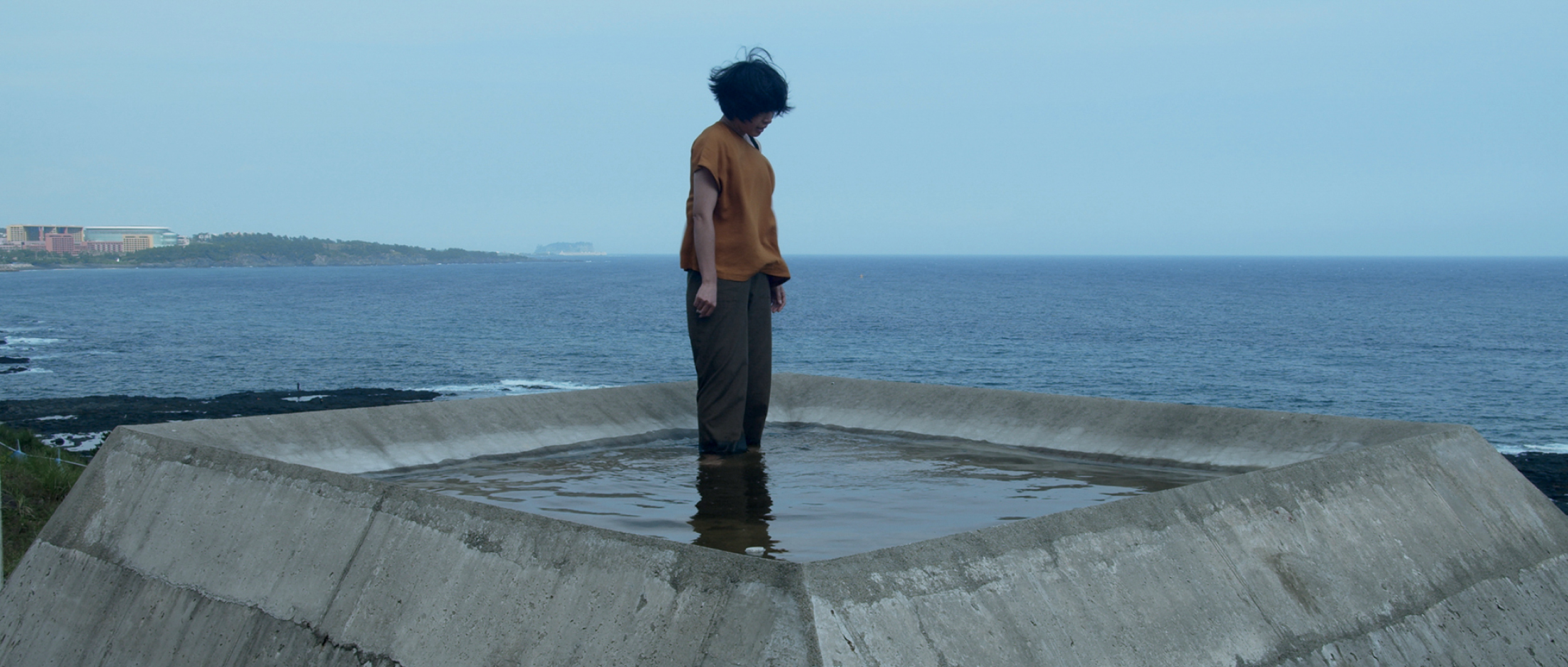Issue
Dispatch: Jeju

Last year some friends and I attended a music festival organized by artist-activists from Gangjeong Village on the southern coast of Jeju Island. The area also happens to be the location of a controversial naval base. Occupying most of Gureombi, a 1.2 kilometer coastal stretch of volcanic bedrock, the military-subjugated area used to be a designated Absolute Conservation Zone for its biodiversity and rare, soft coral beds, as well as a sacred site where locals have held shamanic rituals for generations.
Despite a decade-long nonviolent resistance against the militarization of Gureombi by villagers, activists, religious leaders, and artists from Korea and abroad, the government opened the naval base in 2016. Many of the original defenders of Gureombi settled in Gangjeong Village, continuing their peaceful anti-military activism to this day. Every day except Sundays, at noon, they gather at the main gate of the naval base to perform a collective dance. Afterward, they have lunch at Halmangmul kitchen. The name translates to “Grandmother’s Water,” and it commemorates the spring water that poured out of the crevices of Gureombi, where the Rites for the Earth God, Tosinje, have long been held.
Between 2021 and 2023, the artist-activists of Gangjeong also took over the village tangerine packing barn during the off-season and named it Space Bisugi. Here they organized exhibitions, screenings, and talks in solidarity with other communities that had faced various forms of state violence, including those fighting for broader LGBTQ+ rights and those caught up in and affected by the Hong Kong protests. In 2022, they opened a multipurpose community cafe called Gonggan Parenthesis, where I met up with the filmmaker-activist Grace Sungeun Kim, who first visited Gangjeong in 2013 before moving to Jeju in 2019.
Kim’s feature-length film Map Without Island (2021) addresses many of the fraught social, political, and environmental conflicts in Jeju that are hidden from most tourists, including the Yemeni refugees who arrived in Jeju seeking asylum, as well as the environmental activists who opposed the destruction of the forest along Bijarim Road near the controversial site of the soon-to-be-built second airport. The film also depicts the precarious relationship between “outsider” residents, like Kim, and the island’s native inhabitants.
In June, a group exhibition titled “Unmute Water: Oscillated Walking” opened at Sanjicheon Gallery, a government-run exhibition space refurbished from an abandoned motel and public bathhouse in the old downtown area of Jeju City. Organized by Kim in collaboration with Dianaband and Oro Minkyung, two sound artists from Seoul, this was the outcome of their year-long field research into the island’s groundwater. In Jeju, it takes an average of 25 years in the hydrological cycle for the rainwater to reach the coastal area as fresh spring water.
Last year I joined Kim and Oro on a walk along the dry riverbeds of the Hyodoncheon valley where we tried to imagine the sound of the groundwater moving hundreds of meters below our feet. This trajectory of sonic imagination carried the unspoken or suppressed stories of the island’s past (the Jeju Uprising and massacre of 1947–54), the present (the clash between migrant and native interests), and the future (climate change and ecological crisis).
Living in Jeju, my biggest surprise has been encountering several eclectic migrant artists who moved to the island and discovered alternative ways of living and being. Photographer Oksun Kim, who moved here in the mid-1990s, took photographs of both mundane and whimsical moments of foreigners living in Jeju, which culminated in a photo series entitled Hamel’s Boat (2008). In The Shining Things (2014), she took photos of the palm trees near the 2002 World Cup soccer stadium in Seogwipo City. Palm trees are non-native plants first introduced to the island in the 1960s to make Jeju a more attractive tourist destination. Kim recently told me that most of the palm trees in her images have since disappeared due to the rapid urban redevelopment that began in the mid-2010s. I asked if she ever thought about leaving. “It’ll be 30 years next year, and I still don’t know if I like Jeju,” she told me. “I don’t think I belong to Jeju, but I don’t belong to Seoul either.” Home to 18,000 gods and goddesses, according to local mythology, Jeju will continue to attract those who seek alternative ways of living and working.
Yujin Lee was born in Daegu, South Korea, and works as an artist, writer, translator, and curator whose practice centers around process-oriented and relational storytelling. After living in Berlin and New York, Lee settled in a rural village on Jeju Island.







